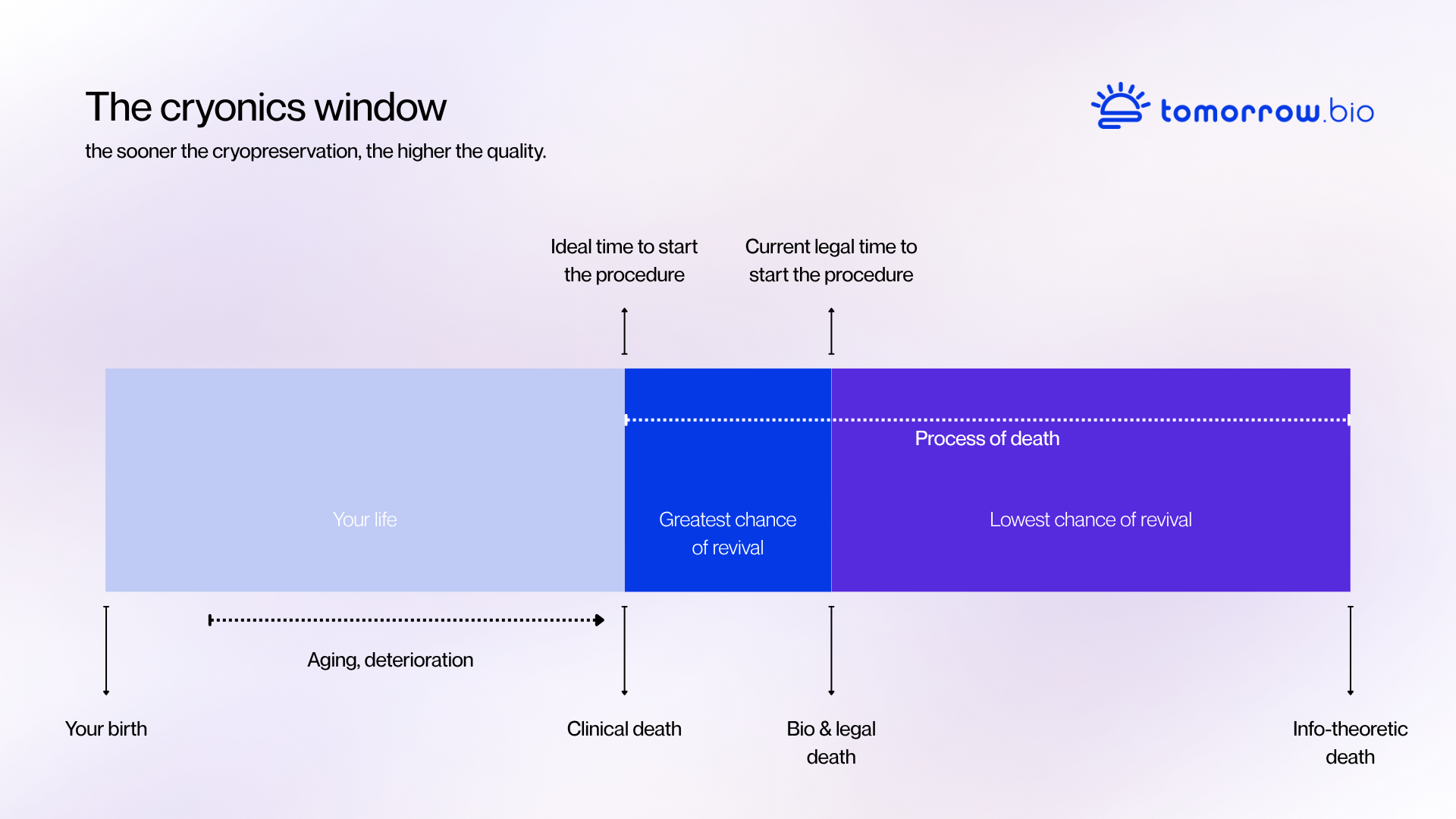Cryopreservation requires a minimum level of biological integrity to be effective. While, in theory, anyone could choose to be cryopreserved, there are situations where proper preservation cannot take place or where the resulting quality would be too poor to offer any meaningful benefit.
The main limitation is time since death. The process must begin while the body’s cells and tissues are still largely intact. After death, the absence of circulation and oxygen leads to progressive cellular breakdown. Over several days, decomposition becomes irreversible, destroying the molecular structures that store biological and neurological information. If too much time has passed after legal death, or the body has been kept at normal room temperature for long periods, successful preservation is no longer possible.
Another limitation involves the condition of the body. Severe trauma, extensive brain injury, or any process that physically destroys tissue makes effective preservation impossible. This includes cases such as major accidents, burning, advanced decomposition, or situations where organs and tissues have already been removed. For cryopreservation to succeed, the overall anatomy, especially of the brain, must still be largely intact.
If a person has already been buried or cremated, cryopreservation is no longer an option. Burial exposes the body to microbial activity, moisture, and pressure that quickly degrade tissue, while cremation irreversibly destroys all biological structure. Even exhumation after a short period underground would not restore the level of preservation needed for cryonics to have value.
Preparation and access play a crucial role in determining whether a cryopreservation can take place successfully. The speed at which the standby and cryopreservation team can reach the patient directly affects preservation quality, but preparation before that moment is equally important. Having a proper funding method in place ensures that the procedure can be carried out immediately without financial or logistical delays. Completing all legal and medical documentation in advance guarantees that the team can act as soon as possible after death is declared. It is also essential to inform family, caretakers, and close contacts about one’s wishes, so they know whom to contact and what steps to take when the time comes.
Using emergency identification tools, such as bracelet or necklace, helps alert medical personnel and emergency responders to your cryopreservation wishes, ensuring rapid communication with the standby team. Together, these preparations allow for a fast, coordinated response, the key factor that determines the final quality of preservation.






